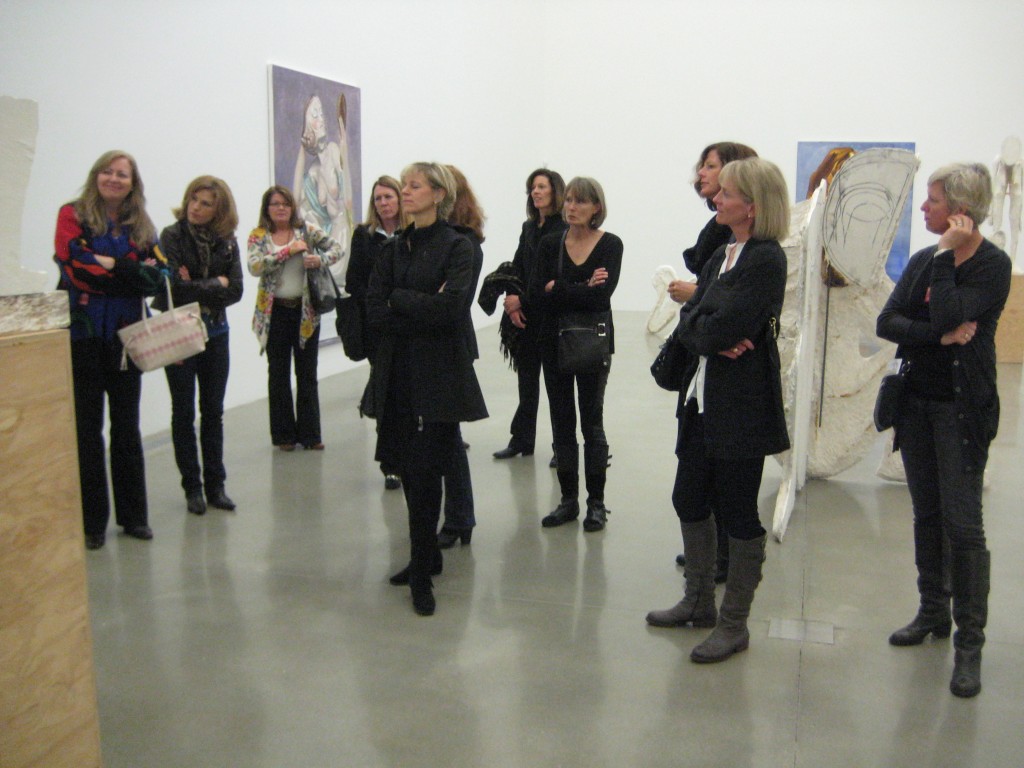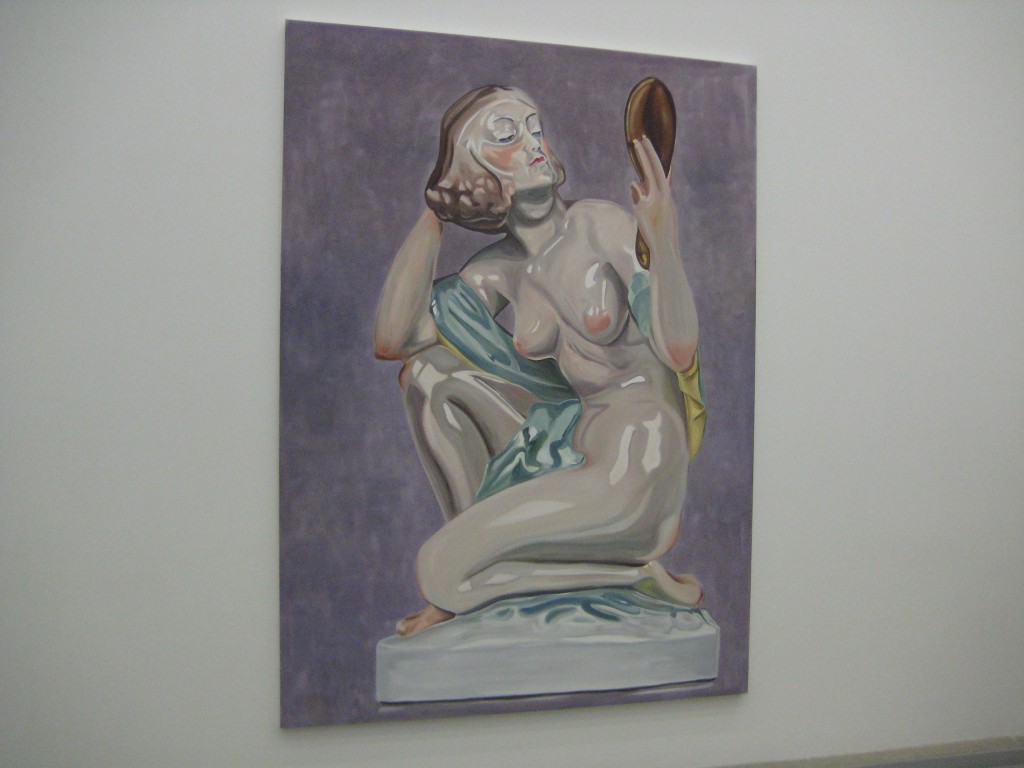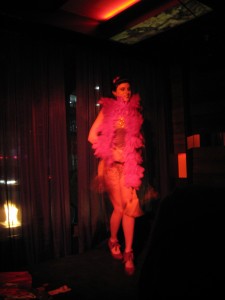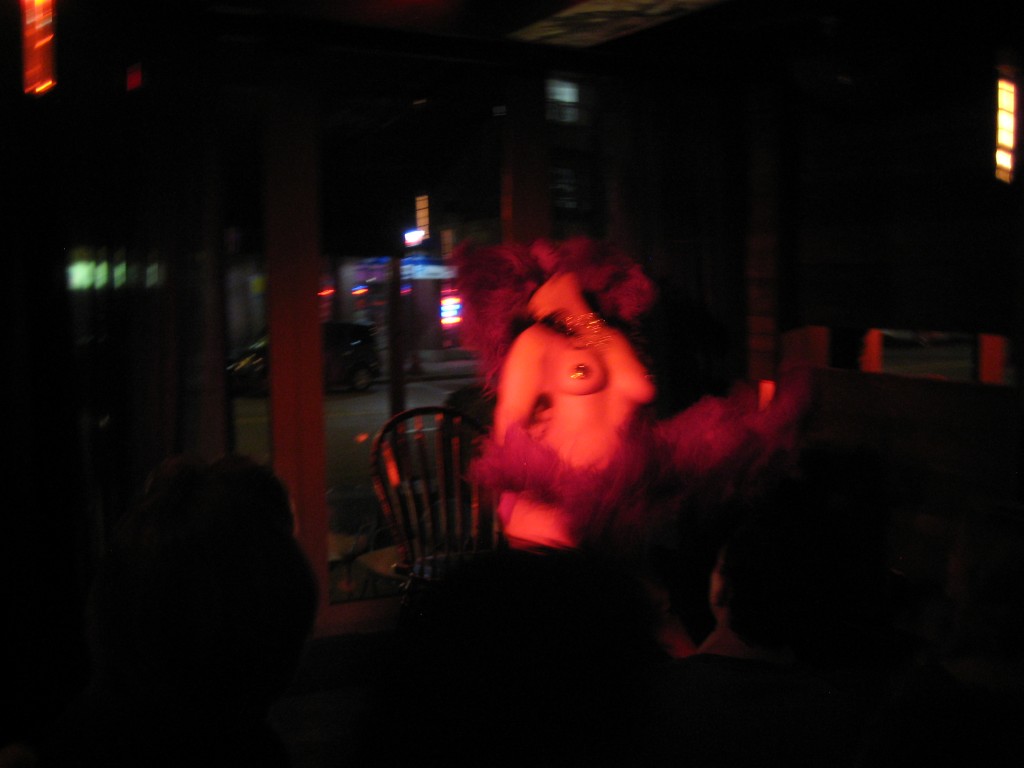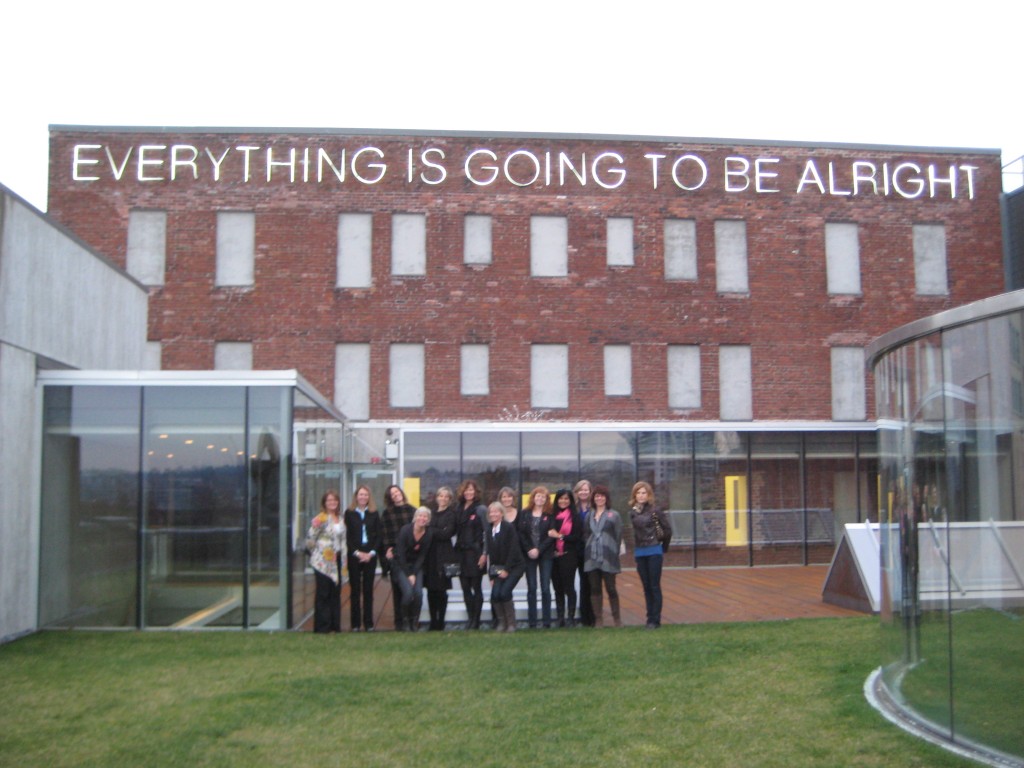I am very fortuante to have a group of friends that meet once a month or so to share ideas and thoughts.  This month’s get together was to see the new art collection at Bob Rennie’s Wing Sang Gallery. The exhibition was of Los Angeles-based artists Thomas Houseago and Amy Bessone, who both deal with the figure and representations of the figure in a contemporary and insightful manner.
Amy Bessone’s work is evocative, and is described as often translating porcelain figurines into 2D. Many of the paintings on display reference the traditional female nude, both in her representations of porcelain figurines and in more recent paintings that simply allude to the nude. “Since her student days, she has been interested in the idea of a painting of a sculpture or a painting of a painting, much like the Shakespearean idea of a play within a play. She is influenced by the theatre, and the sculptors with whom she surrounds herself.”
Bessone applies paint thinly, allowing the white of the gesso’d canvas to show through to depict the highlights of the porcelain as the light falls over the figurine. The Narcissist (2007) is a classic example of this effect, creating a sense of both knowing what something is and not knowing – is it a portrait? Is it a still-life? Or is she a lifeless object, objectified for her sexuality? Her more recent paintings like 80s Life (2010) seems to remove this passive male objectification by swift and economic painting over the canvas, eschewing the gaudiness excessive paint can provide. Bessone has brought the female figure back to life through the act of painting.” (From the Wing Sang brochure)
Back to my evening with the girls;
As I revisit our tour of the show I realize there is a connection between Amy Bessone’s work and the rest of our evening. Â After our tour of Wing Sang we ended up around the corner at The Keefer. Â As the hours passed our numbers dwindled leaving only 4 of us for what turned out to be Burlesque night at the Keefer. Â What immediately struck me was the Zeitgeist of the evening; that is, the cultural connection between the Burlesque and Amy Bessone’s show at Wing Sang.
Both genres are evocative of the kitsch ‘pin-up’ girls of the past. Pin-up artwork, depicting idealized versions of particularly beautiful or attractive woman from a man’s perspective clearly parallels the sexualized vision of womanhood displayed in Burlesque.
In 2008, The New York Times noted that Burlesque had made a comeback in the city’s art performance scene.  Today Neo-Burlesque has taken many forms, but all have the common trait of honoring one or more of burlesque’s previous incarnations, with acts including striptease, expensive costumes, bawdy humor, cabaret and more.
Derived from literature and theatre, ‘burlesque’ is used in classical music to indicate a bright or high-spirited mood, sometimes as counterpoint to seriousness. In burlesque, performers, usually female, often create elaborate sets with lush, colorful costumes, mood-appropriate music, and dramatic lighting, and may even include novelty acts to enhance the impact of their performance. The striptease element of burlesque became subject to extensive local legislation, leading to a theatrical form that titillated without falling foul of censors.

Clearly the post modern descendants of Burlesque and Pin Up Art enjoy some of the same sensuality and titillation as their original forms, made that much more of a guilty pleasure in the current climate of political correctness. This same contrast also adds a layer of self-conscious, retro sophistication to these pieces where we simultaneously laugh at their relatively modest sexuality while yearning for the simpler times when a flash of skin was considered scandalous.
Like burlesque, girl’s night is a little more rich and complex than it used to be.

